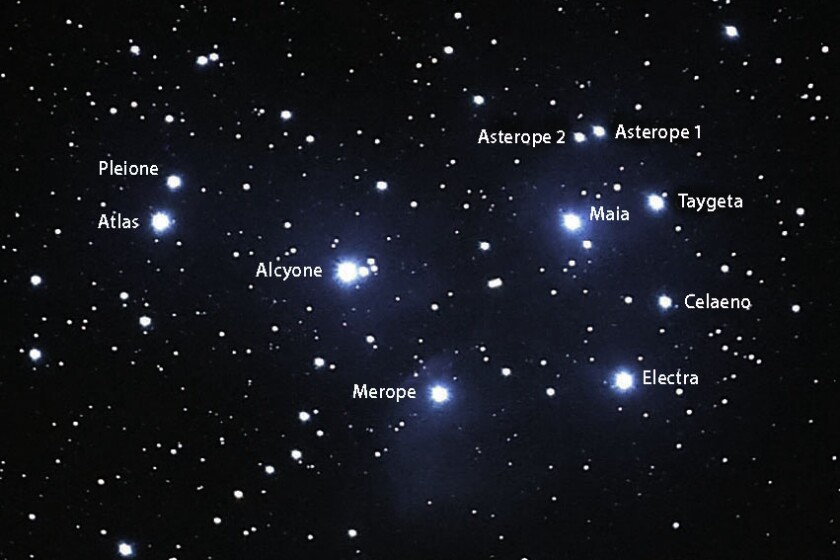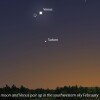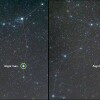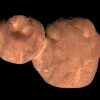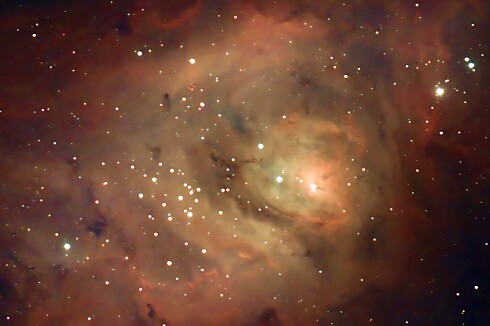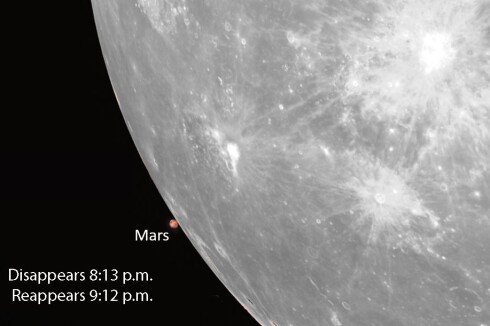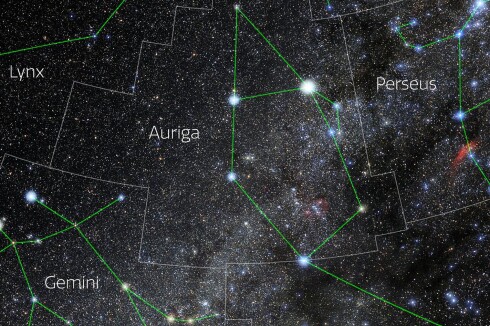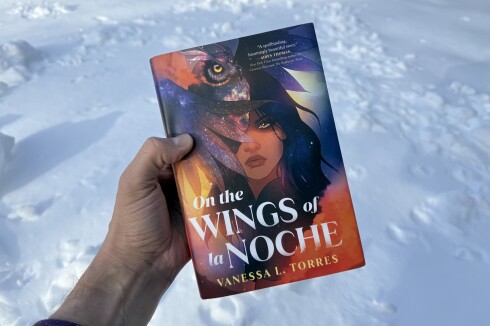Everybody loves the Pleiades (PLEE-uh-DEEZ).
Most people know them as The Seven Sisters, but they have many names. The Japanese call them Subaru, which means "gather together," while in Hungarian folklore they're Fiastyúk, a hen with chicks. Few celestial objects are as distinctive and eye-catching as this compact cluster of hot, blue-white stars located 444 light-years from Earth.
ADVERTISEMENT
I always associate them with fall's falling temperatures and the anticipation of that first really good snow. In mid-November, the dipper-shaped group climbs high enough in the eastern sky to clear the trees around 6:30 p.m. local time. Take a walk after dinner any clear night this time of year and you can't miss them.
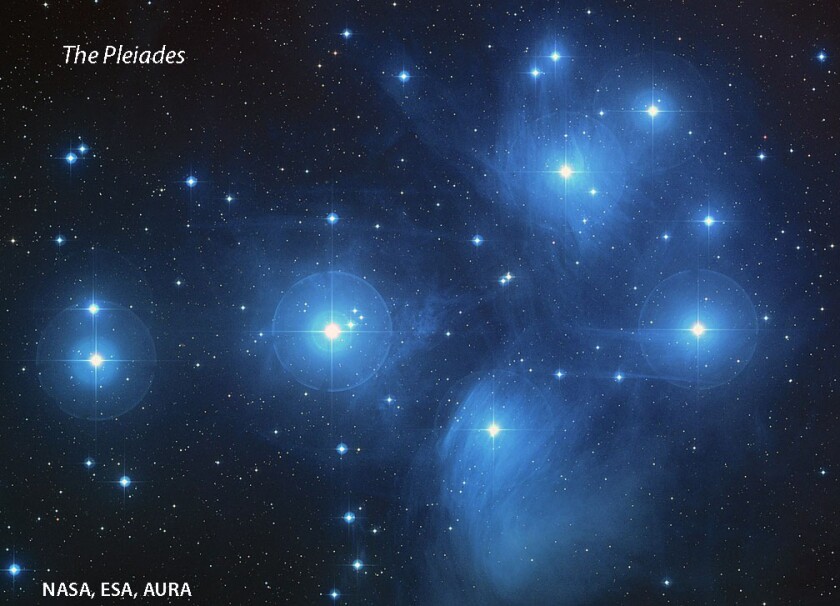
At first glance, the cluster looks fuzzy as if the stars were embedded in nebulosity like milkweed seeds in lustrous floss. Crowded dim stars look hazy to our eyes. I've seen this through the telescope when faint stars in close proximity mimic the appearance of a fuzzy comet. It also happens with the Pleiades — with a twist. At least some of the cluster's misty glow is real, caused by its member suns faintly illuminating a happenstance cloud of interstellar dust along our line of sight.
However blurry they appear at first, if you look more closely you can clearly distinguish individual stars. From moderately light-polluted locations most people can spot five of the Pleiades — Altas, Alcyone (the brightest of the bunch), Merope, Maia and Electra. From darker skies, fainter Taygeta, in line with Alcyone and Maia, pops into view to make six.
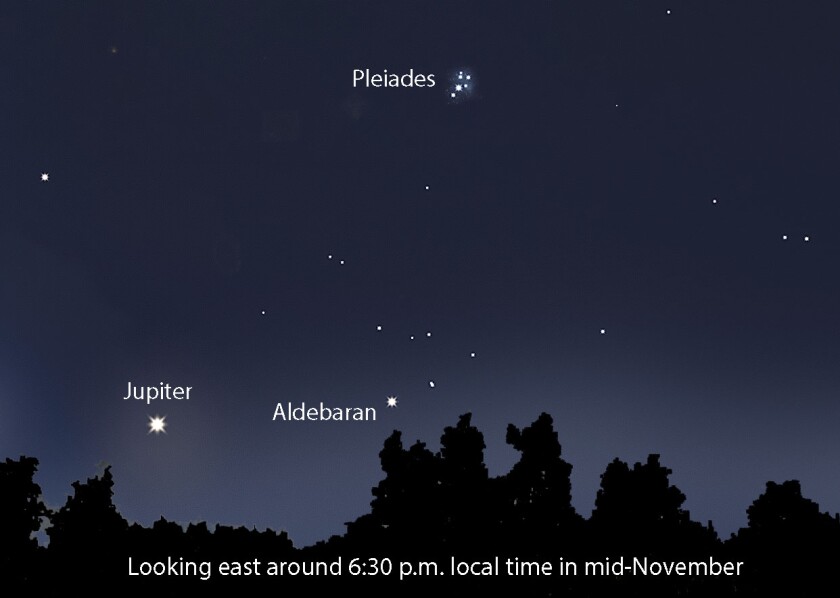
I always struggle with No. 7, Pleione. Not only is it the faintest of the bright cluster stars, but it also nestles close to Atlas. To see it, try using averted vision, the technique of looking at something obliquely instead of staring straight at it. Play your eye around the star and you'll have better success coaxing it into view. After a few tries I can usually spot it.
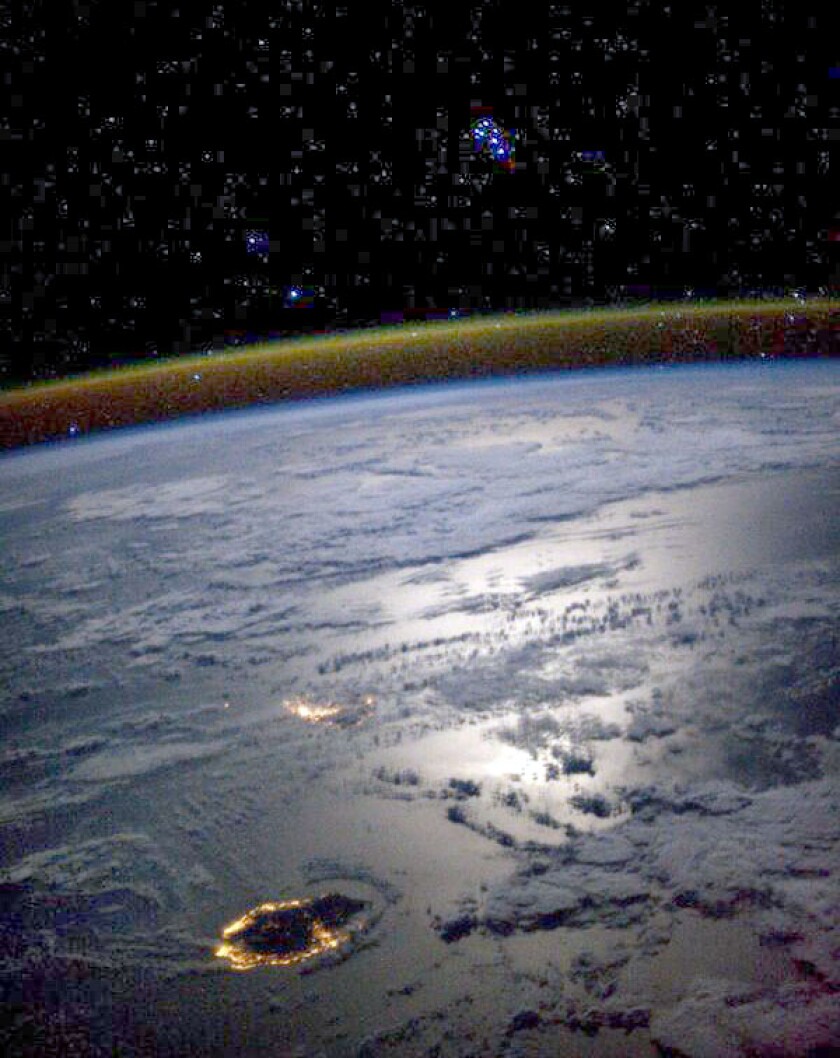
Younger skywatchers see fainter stars more easily because the lenses in their eyes are still clean and clear. They also don't have to deal with floaters — dark specks crossing the field of vision — that plague older viewers. As we age, our eyes can develop cataracts or clouding of the lenses. Fortunately, an ophthalmologist can perform a simple surgery and replace the old lenses with new, artificial ones. When it's my time for cataract surgery I'll be eager to return to the Pleiades to test my new super-vision.
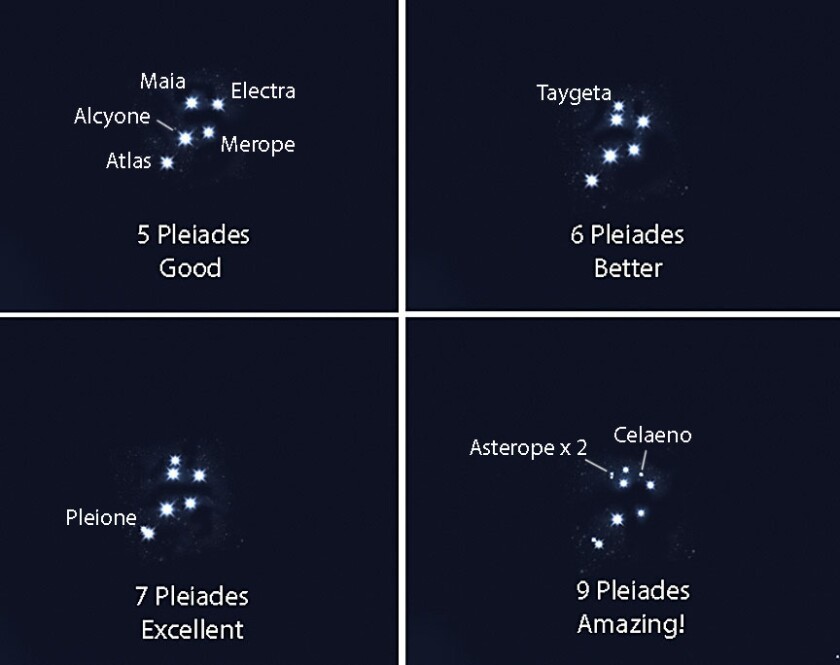
If the sky is dark and moonless and your visual acuity is exceptional, more stars await. You can try for even dimmer Celaeno, which forms an isosceles triangle with bright Maia and Electra. The most challenging are the two Asteropes, a tight pair of suns that blend together into a single, faint star. Binoculars will easily separate them. Altogether that makes nine Pleiades — the complete family!
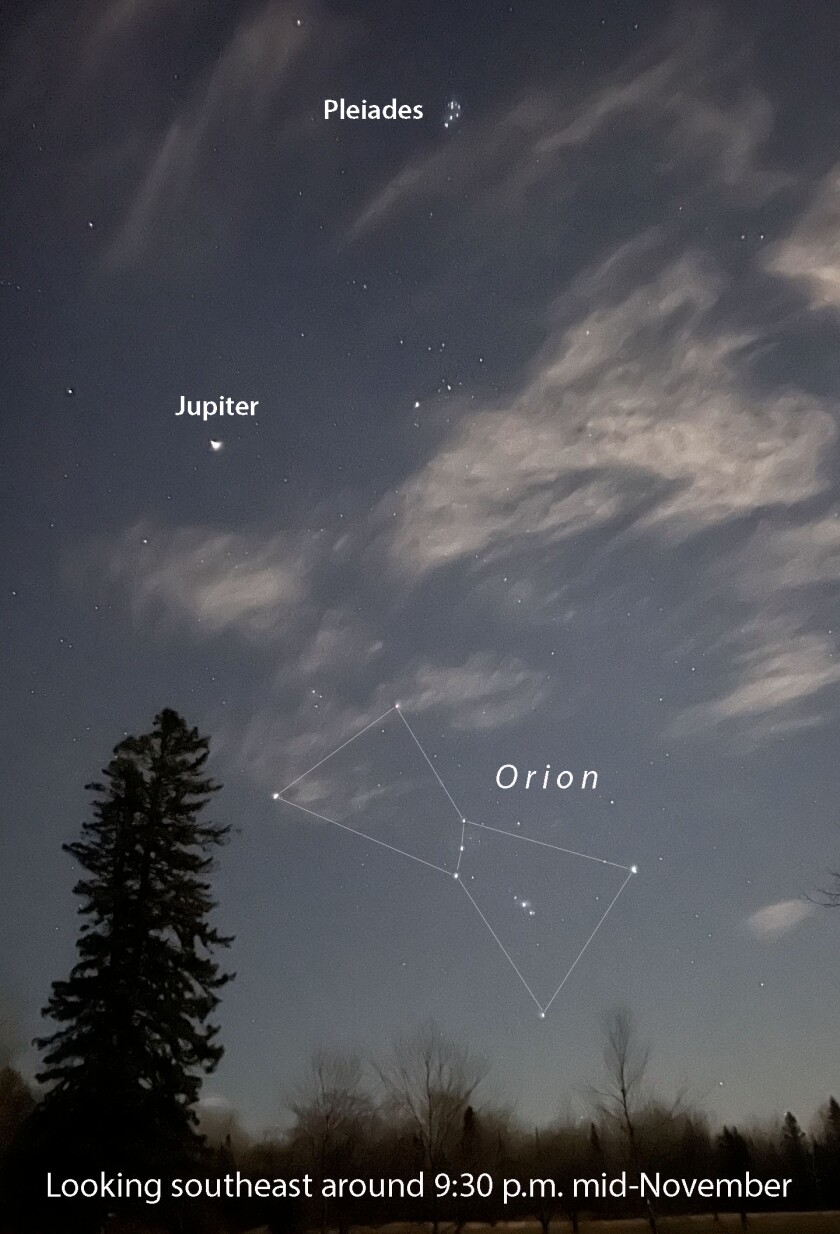
According to ancient Greek myth, the Titan Atlas and his wife Pleione, a sea nymph, had seven daughters, all of whom you've now met. After Atlas was forced to carry the heavens on his shoulders as punishment for leading a rebellion against Zeus, Orion seized the opportunity to pursue both Pleione and her daughters. This went on for seven years until Zeus had had enough. To comfort Atlas he transformed the women into doves and sent them into the heavens as the Pleiades.
ADVERTISEMENT
They say Orion still pursues them to this day. In a figurative way that's true. The hunter constellation rises after the star cluster and "chases" it across the sky from east to west. But given that the two figures are fixed in position, Orion's quest will never be realized. Nice work, Zeus.
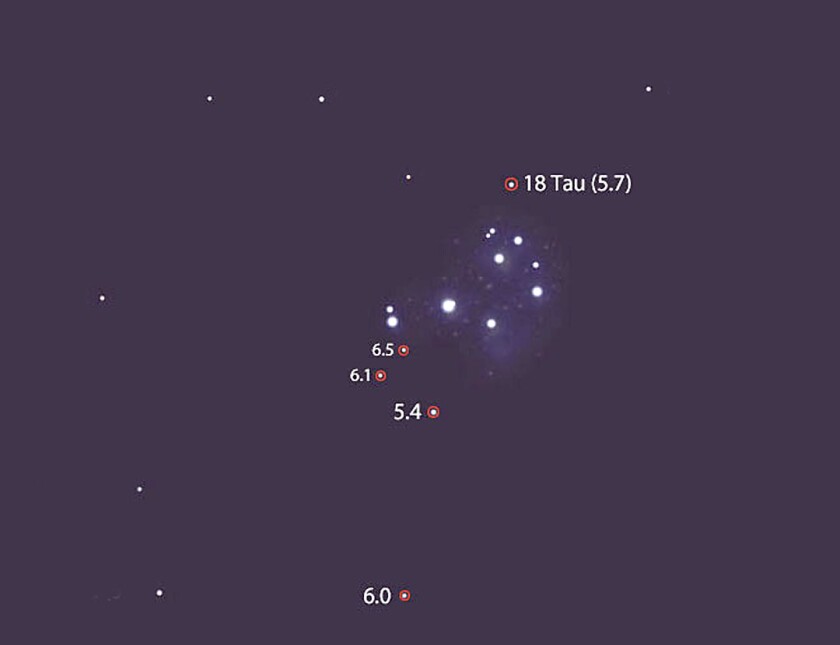
Can we see more than nine Pleiades with the naked eye? Yes! From a dark sky you can track down five additional members. They range in brightness from magnitude 5.4 to 6.5. Astronomers use the magnitude scale to measure stellar brightness. The larger the number the dimmer the star. A typical bright star has a magnitude of 1. From the suburbs, a sharp-eyed skywatcher can see stars as faint as magnitude 4. The naked-eye limit from a rural sky is around magnitude 6 to 6.5.
On a moonless night in the countryside when the Pleiades are high in the sky, you can add these five to make 14. My record is 12, so I still have a ways to go. While the naked-eye view of the cluster is impressive, binoculars reveal a veritable bonanza of stars. Binoculars also help pinpoint exactly where to look in case you're having difficulty spotting one of the fainter members.
For the next few nights, glare from the waning gibbous moon will compromise the view. But starting Nov. 18 it departs the early evening sky, which will make for lots of opportunities to get acquainted with mom, dad and the girls.

